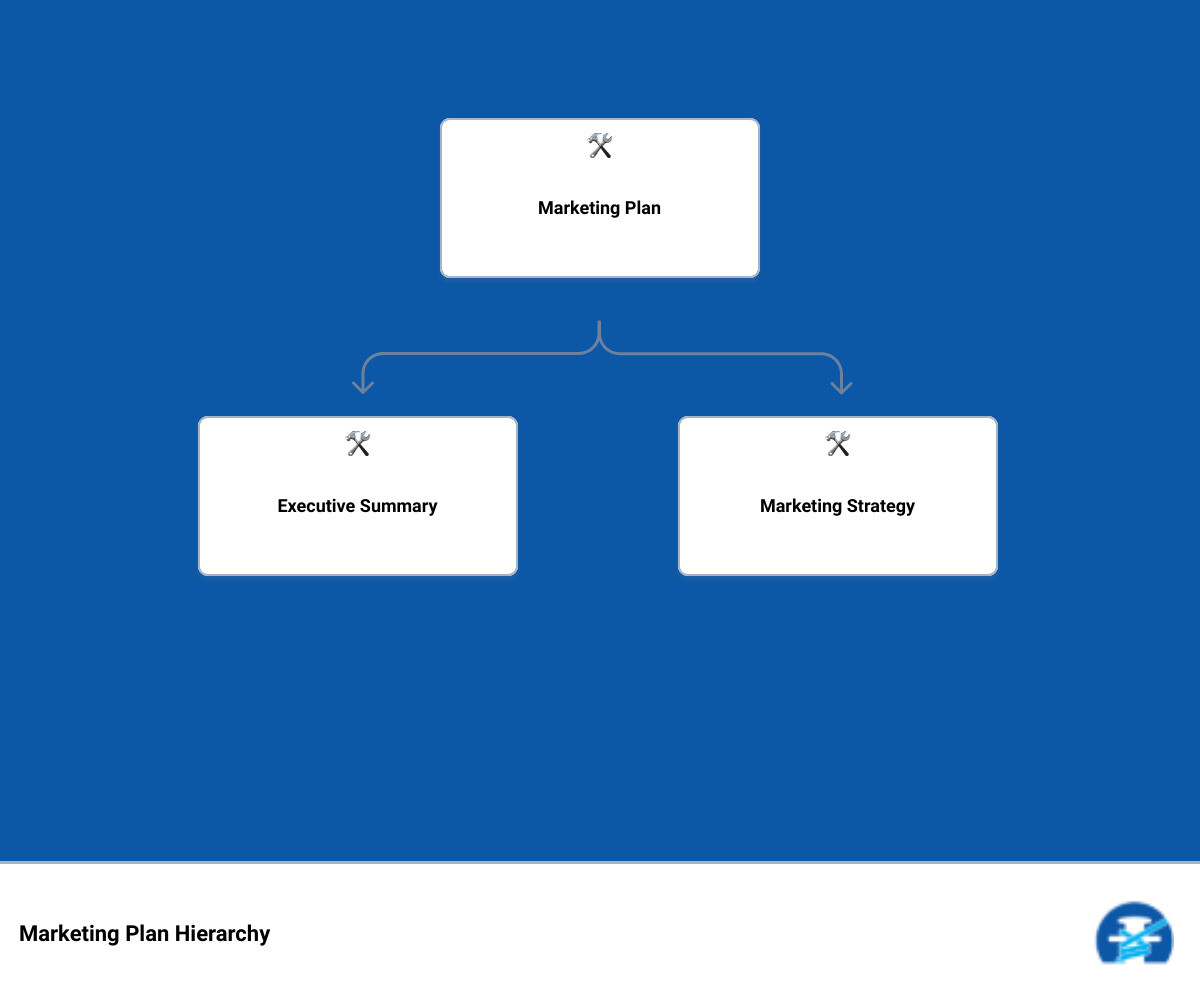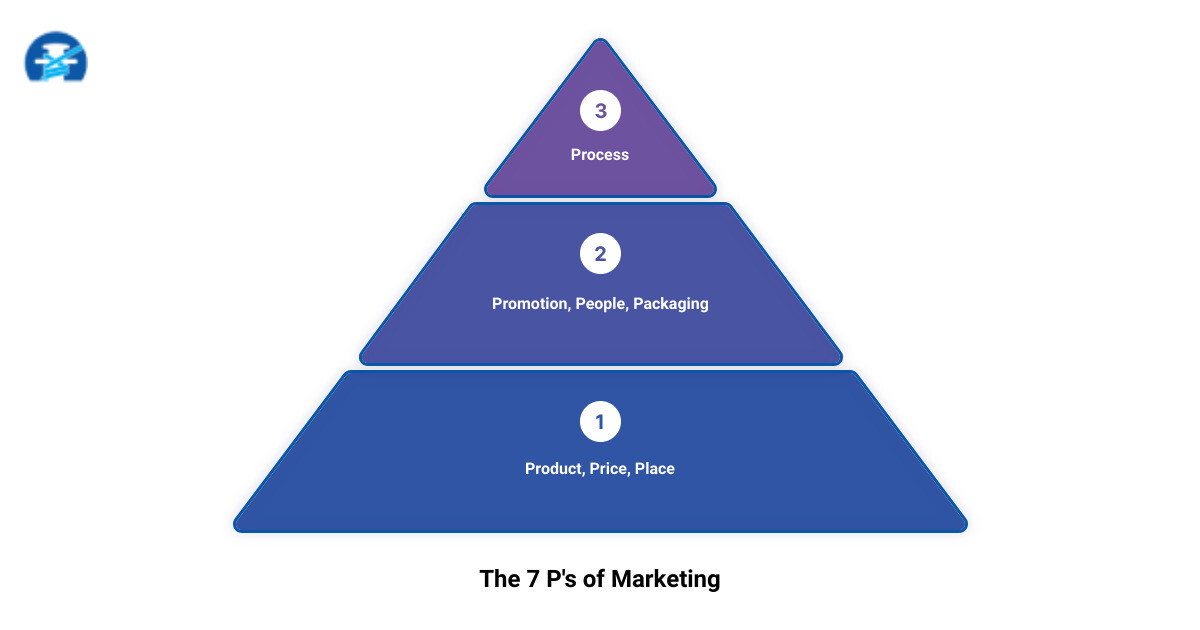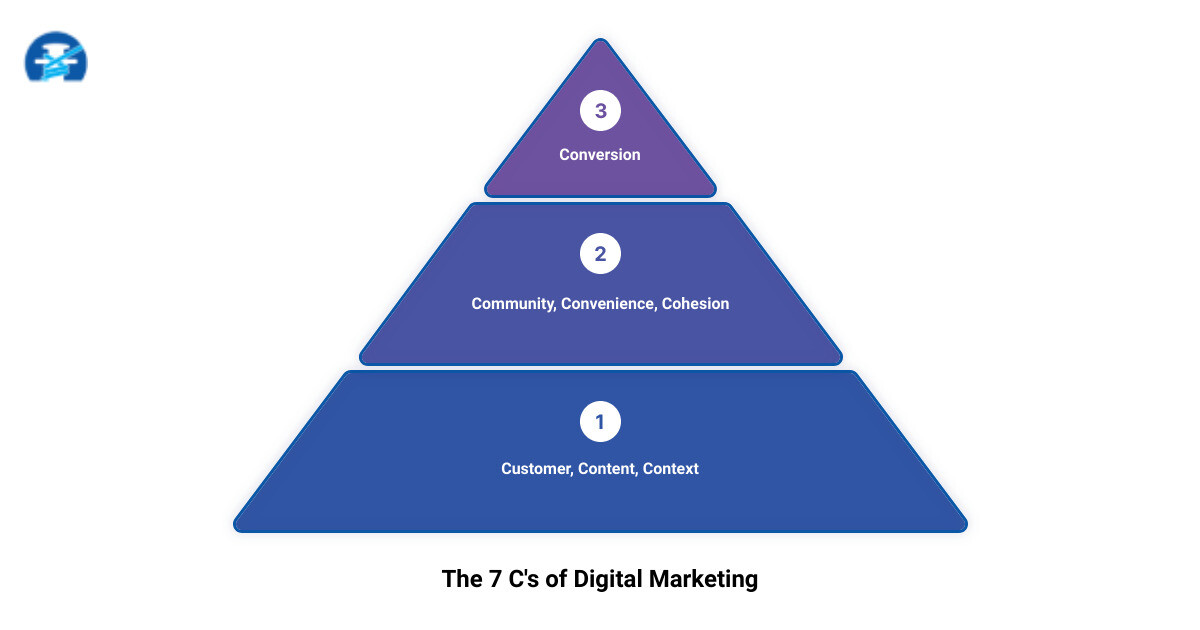Get In Touch
Thank you! Your submission has been received!
Oops! Something went wrong while submitting the form
Introduction: The Importance of a Marketing Plan for E-commerce Businesses
In the bustling digital marketplace, a well-crafted marketing plan is your secret weapon. It's the strategic blueprint that elevates your Shopify store from being a mere digital storefront to a powerful customer magnet. Whether you're a seasoned marketer or a business owner making strides in e-commerce, understanding the contents of a marketing plan can propel your online store to new heights of success.
Not only does a robust marketing plan help you navigate the competitive digital landscape, but it also enables you to align your marketing initiatives with your company's overarching objectives. More than just a collection of strategies and tactics, it's the roadmap that guides your marketing decisions, helping you plot the course from where you are to where you want to be.
Why is a marketing plan so pivotal? It serves as your reliable compass, directing your marketing efforts towards your target audience, and helping you stand out in a crowded market. It equips you with the insights necessary to craft compelling marketing messages that resonate with your audience, fostering customer loyalty and boosting brand awareness.
In essence, a well-executed marketing plan is the fuel that drives the engine of your e-commerce business, powering your journey towards long-term success. Let's peel back the layers and unveil the hidden contents of a marketing plan, its necessity, and its transformative impact on your e-commerce business.

Understanding the Basic Contents of a Marketing Plan
A marketing plan is the roadmap that guides your business towards growth and success. It is a strategic document that outlines your overall marketing direction, tactics, and the actions needed to reach your objectives. Let's delve deeper into the key components of a robust marketing plan.
Executive Summary: Goals and Recommendations
The executive summary is the compass of your marketing plan, guiding your course throughout your marketing journey. It provides a brief overview of your primary objectives and recommendations, enabling stakeholders to grasp the plan's major points quickly. This section should be clear, concise, and grounded in hard data.
Current Marketing Situation: Market, Product, and Competition Analysis
The current marketing situation section is the foundation of your plan. It provides vital insights into your target market, your product's performance, your competitors, and your distribution channels. Understanding your current market situation allows you to identify opportunities and threats and tailor your marketing strategies accordingly.
Opportunity and Issue Analysis: SWOT and Main Issues
The opportunity and issue analysis section uses SWOT (Strengths, Weaknesses, Opportunities, and Threats) to identify the main issues the plan must address. It provides a comprehensive understanding of external opportunities and threats in the market, along with internal strengths and weaknesses.
Objectives: Sales Volume, Market Share, and Profit
Setting clear objectives is crucial in directing your marketing efforts. Your objectives should define your plan's financial and marketing goals in terms of sales volume, market share, and profit. These objectives should be specific, measurable, achievable, relevant, and time-bound (SMART) to ensure they guide your efforts effectively.
Marketing Strategy: Broad Approach to Achieve Goals
Your marketing strategy is the tactical plan of action that positions your business to achieve its objectives. It outlines your target market, positioning, product line, pricing, distribution outlets, and promotional strategies. The marketing strategy should be aligned with your business goals and tailored to your target audience's needs and preferences.
Action Programs: Steps to Achieve Objectives
The action programs section outlines the specific activities that will be taken to achieve your objectives. These could be anything from launching a new product, implementing a promotional campaign, or improving customer service. The action programs should detail what will be done, by whom, when, and at what cost.
Projected Profit and Loss: Financial Forecast
The projected profit and loss statement forecasts the financial outcomes of your marketing plan. It provides an estimated income and expenses, helping you plan your budget effectively and measure the success of your marketing efforts.
Controls: Monitoring the Program
Lastly, the controls section of your marketing plan outlines how the progress of the plan will be monitored. It sets the criteria for evaluating the effectiveness of your marketing actions and provides a mechanism for making necessary adjustments.
A marketing plan is not a static document but a dynamic tool that should be regularly updated and adjusted based on market changes and business performance. Now that we've unveiled the hidden contents of a marketing plan, you're well-equipped to craft a plan that drives your e-commerce growth and success.

The 7 P's of a Marketing Plan: A Deeper Dive
Just like an artisan crafting a masterpiece, each element of a marketing plan plays a pivotal role in the overall success. The 7 P's of a marketing plan offer a holistic framework for understanding and executing your marketing strategy. Let's delve into each of these elements.
Product: Understanding Your Offerings
Your product is the heart of your marketing plan. It's not just about what you sell, but how you present and deliver it. In the context of e-commerce, your Shopify store is your product. It's vital to make your online storefront user-friendly, attractive, and memorable to ensure a seamless shopping experience for your customers.
Price: Setting the Right Price Point
Setting the right price is a blend of art and science. It involves understanding your customers' willingness to pay, analyzing your costs, and ensuring a healthy profit margin. Competitive pricing that delivers value to your customers while ensuring your business's profitability is key.
Promotion: Strategies for Promoting Your Products
Promotion is all about creating awareness and generating interest in your products. From SEO and PPC to social media marketing and email marketing, there are numerous promotional channels you can leverage. Be creative and experiment with different promotional strategies until you discover what resonates with your audience.
Place: Choosing the Right Distribution Channels
'Place' in the digital world refers to where you reach your customers. With the rise of e-commerce platforms like Shopify, you can leverage various social media platforms to extend your reach, including Facebook Shop, Instagram Shopping, and even Pinterest.
People: Identifying Your Target Audience
People are the lifeblood of any marketing strategy. Understanding your target audience's preferences, behaviors, and needs is crucial in creating marketing messages that resonate with them. It's all about building relationships and fostering loyalty.
Packaging: Presenting Your Products Effectively
Packaging is more than just wrapping your product; it's about presenting your products in a way that entices your customers. From your website design to your product descriptions and images, every aspect should be crafted to enhance the customer's shopping experience.
Process: Streamlining Your Operations
Lastly, the process involves the systems and procedures that keep your e-commerce operations running smoothly. It includes everything from order fulfillment and shipping to customer service and returns. Streamlining these processes ensures a seamless shopping experience for your customers and efficient operations for your business.
With a deep understanding of the 7 P's of a marketing plan, you can craft a comprehensive strategy that caters to your customers' needs, enables you to stand out in the marketplace, and ultimately drives leads and sales.

The 7 C's of Digital Marketing: A Modern Twist
In the rapidly evolving digital landscape, traditional marketing strategies must be adapted to stay relevant and effective. This is where the 7 C's of Digital Marketing come into play. These seven principles provide a modern twist to the traditional marketing plan, offering a more holistic approach to reach and engage your target audience in the digital world.
Customer: Knowing Your Audience
The first C stands for the customer. It's essential to have a detailed understanding of your target audience, including their needs, preferences, and behaviors. This allows you to create a personalized marketing approach that resonates with them, thereby increasing the likelihood of conversion.
Content: Creating Engaging Content
Content is the heart of any digital marketing strategy. It's the substance of your online presence that attracts and engages your audience. From blog posts and social media updates to email newsletters and more, your content should be valuable, engaging, and tailored to your audience's needs.
Context: Understanding the Market Environment
Next is context. It's crucial to understand the larger conversation happening in your market. This involves staying abreast of industry trends, knowing your competitors' strategies, and understanding the external factors that may affect your business. With this knowledge, you can position your content effectively within the market context.
Community: Building a Loyal Customer Base
Building a community is about creating a network of loyal followers and customers. This could involve engaging with your audience on social media, creating a loyalty program, or providing exceptional customer service. A strong community not only helps retain existing customers but also attracts new ones through word-of-mouth referrals.
Convenience: Making Shopping Easy for Customers
In the digital world, convenience is king. Your products or services should be easy to access and buy. This can involve optimizing your website for mobile devices, providing a seamless checkout process, or offering various payment options. The easier it is for customers to make a purchase, the higher your conversion rates will be.
Cohesion: Ensuring Consistency Across Channels
Cohesion refers to ensuring all your marketing efforts are unified and consistent. Whether it's your brand messaging, visual identity, or customer service, consistency across all channels helps reinforce your brand image and provides a seamless customer experience.
Conversion: Turning Visitors into Customers
The final C, conversion, is all about turning your website visitors into paying customers. This can be achieved by implementing effective call-to-actions, optimizing your website for conversions, or using data-driven strategies such as A/B testing to improve your conversion rates.
Incorporating the 7 C's into your digital marketing strategy can help you create a more personalized and effective approach that not only drives traffic but also helps convert that traffic into loyal customers.

Adapting Your Marketing Plan for E-commerce: Insights from First Pier
As we shift gears from traditional marketing plans, let's dive into how to adapt your strategy specifically for e-commerce. The e-commerce landscape is a whole new ball game, and to win, you need a playbook designed specifically for the digital field. This is where the expertise of First Pier, an e-commerce agency specializing in Shopify development and optimization, comes in handy.
Leveraging Shopify for E-commerce Success
Shopify is a robust platform teeming with features that can propel your online store to new heights. However, harnessing its full potential requires a sound understanding of its functionalities and a clear strategy.
First Pier, with its deep knowledge of Shopify's ecosystem, can help you navigate the platform's capabilities to boost your online presence and sales. Whether it's leveraging Shopify's powerful tools like Shopify Email Marketing, Shopify Pay-Per-Click & Paid Social Media, or Shopify SEO, First Pier's team of experts can guide you in making the most of these tools to drive traffic and conversions.
Addressing Common E-commerce Challenges
E-commerce, while promising, comes with its share of challenges. Navigating the digital marketing landscape, understanding your customers' evolving needs, and continuously refining your marketing strategies can be daunting. But with First Pier's expertise, these challenges can be turned into opportunities for growth.
First Pier not only helps you decipher Shopify's data-driven insights and analytics but also assists in managing your online store efficiently. With their support, you can focus on what you do best - running your business - while they take care of optimizing your online presence.
Monitoring and Adapting Your Marketing Plan
In the fast-paced digital world, being static is not an option. Your marketing plan needs to be flexible and adaptable to the ever-changing market trends and customer behaviors. First Pier understands this and helps you stay ahead of the curve by continuously monitoring your marketing efforts and making timely adjustments.
Whether it's tweaking a Pay-Per-Click campaign, optimizing your SEO strategy, or refining your email marketing approach, First Pier ensures that your marketing decisions are always data-informed and effective.
In conclusion, adapting your marketing plan for e-commerce success involves more than just shifting your strategies online. With the right partner like First Pier, you can leverage the power of platforms like Shopify, address e-commerce challenges head-on, and continuously adapt your marketing plan for sustained success.

Conclusion: The Power of a Well-Planned Marketing Strategy
With the ceaseless evolution of the digital landscape, a well-crafted marketing strategy is no longer a mere option but a necessity that can unlock the hidden potential of your online business. The right marketing plan, as we've explored, comprises a comprehensive understanding of your product, pricing, promotion, place, people, packaging, and processes – the 7 P's. When adapted to the digital realm, this evolves into the 7 C's, focusing on the customer, content, context, community, convenience, cohesion, and conversion.
However, the most powerful marketing strategy does more than tick off these essential elements. It connects with customers on a deeper level, building genuine relationships and providing value at every touchpoint, as emphasized by First Pier. This approach transcends transactional interactions, nurturing customer relationships, and creating memorable brand experiences.
The key lies in consistent effort, strategic planning, ongoing optimization, and adaptation to emerging trends and evolving customer needs. Monitoring, evaluating, and adjusting your marketing plan is a continuous process, not a one-time task. Regular performance analysis, revenue variance, market share analysis, and expense analysis are crucial to ensure that your marketing plan is achieving its intended goals.
While this might seem daunting, remember, you're not alone in this journey. Having a trusted partner like First Pier by your side can let you focus on your core business operations while they take care of your marketing strategy. Their expertise in Shopify development and optimization can help you build a high-performance online store, navigate the complex digital landscape, and propel your business to new heights.
In conclusion, a well-planned marketing strategy is your ticket to e-commerce success. It's about understanding your audience, leveraging the right online channels, delivering value at every touchpoint, and continuously refining your strategies based on data-driven insights. It's a strategic approach to driving growth, improving customer relationships, and ultimately, achieving lasting success. Get ready to harness the power of strategic digital marketing and watch your business evolve into a thriving e-commerce powerhouse.





